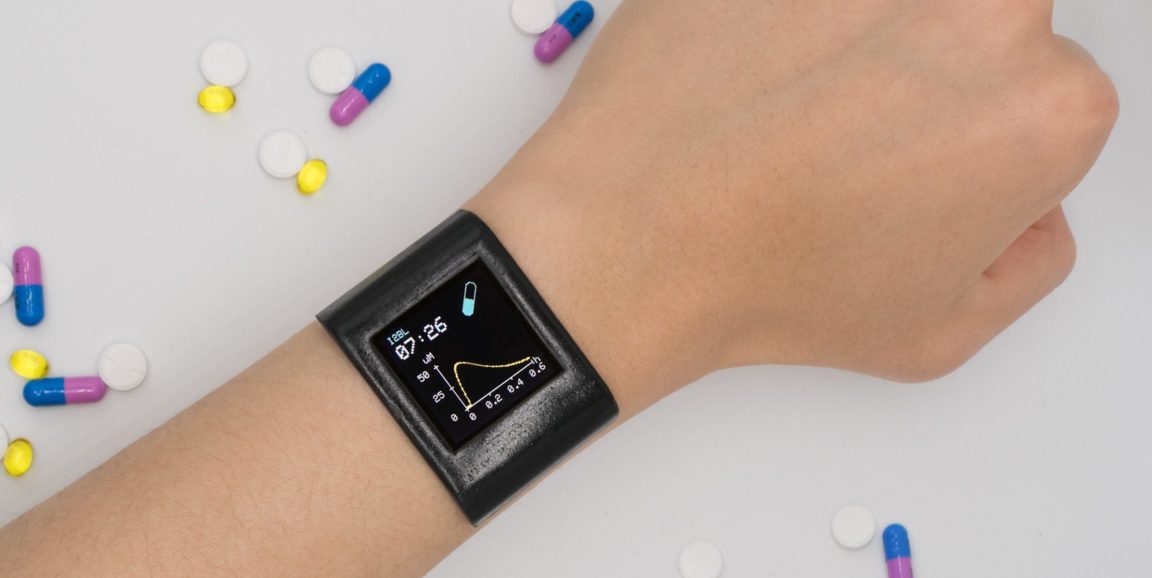A new wearable technology that straps right onto your wrist can provide near-real time readouts of the level of acetaminophen in your body -- and likely many other drugs too.
This innovation -- from researchers at the University of California, Los Angeles, with Stanford Medicine collaborators -- could allow patients to avoid onerous pinpricks and blood draws currently needed to track the levels of a drug in their bodies.
In addition, this kind of monitoring is right in the sweet spot for precision health and medicine, said Ron Davis, PhD, director of the Stanford Genome Technology Center. A pioneer in the field of personalized medicine, he helped conceptualize the technology.
Drugs -- even the common, over-the-counter variety -- are not one-dose-fits-all. Smaller adults often need less than is recommended, and a larger adult may need more. So, a quick, non-invasive way to measure an individual's drug level would be helpful for many.
Measuring drug levels through electrochemical activity
The new drug-reading gadget measures something called "pharmacokinetics," which is essentially the rate at which a person metabolizes a drug. A paper describing the design was recently published in the Proceedings of the National Academy of Sciences. The study was led by Sam Emaminejad, PhD, an assistant professor of electrical and computer engineering at UCLA, who was formerly a graduate student and postdoctoral scholar at Stanford.
He told me that after a person takes a drug, the drug molecules appear in very low concentrations in the body, and they're swimming among other molecules that are present in the blood at much higher concentrations.
With acetaminophen, or certain other types of drugs, the body secretes drug-associated molecules through sweat that electroactive, meaning they exhibit a specific electrochemical signal when voltage is applied. The larger the electrochemical signal, the higher the concentration of drug in the body, Emaminejad said.
The team designed a sensor that could isolate the electrochemical signal from acetaminophen or, theoretically, another target drug, while eliminating the interference of non-target molecules, Emaminejad told me. The researchers affixed this sensor to the back side of a custom-developed smartwatch.
By applying tiny amounts of voltage, the watch scans minute droplets of sweat for the signal of the target medication. Within minutes, the device translates the measured electrochemical signal to the corresponding drug concentration in the body, producing a readout. Bluetooth capability allows the data to be transmitted in almost real time and displayed on the face of the watch. All electrical activity is safely contained within the watch, so the user feels nothing.
Proof of principle
The researchers tested their device on two participants who had ingested acetaminophen. They compared the accuracy of the sweat sensor readout with that of a saliva test, which past studies have shown yields comparable readouts to blood tests. The scientists found that results from the sweat sensor mirrored the results of the saliva test successfully.
The technology is thought to be the first proof-of-principle of a wearable solution that can analyze sweat, give rapid readouts of the body's drug concentration and construct the pharmacokinetic profile of the drug, showing things like rates of drug metabolism, said Emaminejad.
Emaminejad began working on the technology back in 2016, as he was finishing his PhD and starting his postdoctoral research in Davis' lab. Emaminejad and Davis saw potential for this technology to help keep tabs on levels of many circulating molecules that are indicators of the body's dynamic chemical and physiological status, as it relates to drug metabolism.
Their latest innovation "opens up new avenues for monitoring one's biological processes through sweat," Davis told me.
In the future, Davis and Emaminejad hope that the sensors -- or sensors like them -- could be used to help people continuously monitor their health, assisting efforts to regulate blood glucose levels, adjust drug dosages or keep track of stress levels, for example.
"I think this is just the beginning of what we can do with such wearable health monitoring technologies," Emaminejad told me. "Now our goal is to upgrade the wearable consumer electronics into powerful health monitoring platforms, so ideally everyone could learn more information about their bodies' physiological state and take steps to improve their health, fitness and happiness."
Photo by Jialun Zhu, Shuyu Lin and Yichao Zhao (Emaminejad Lab)






